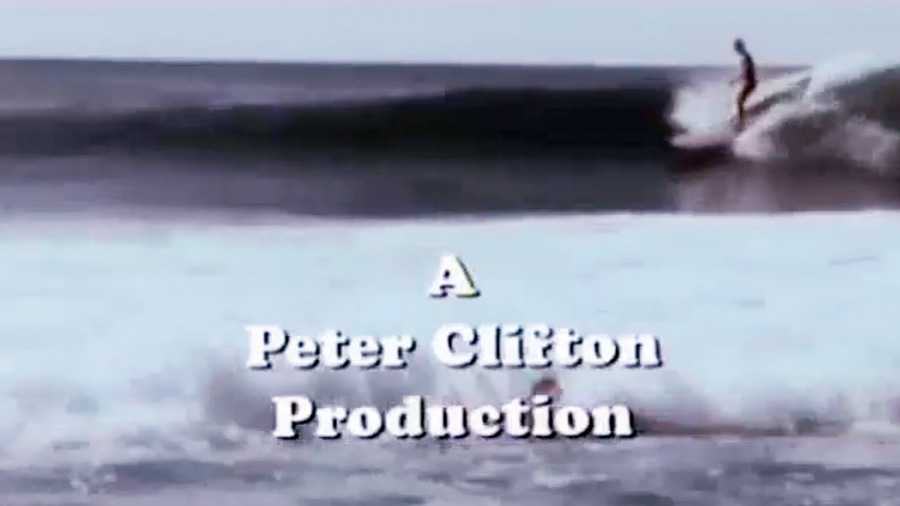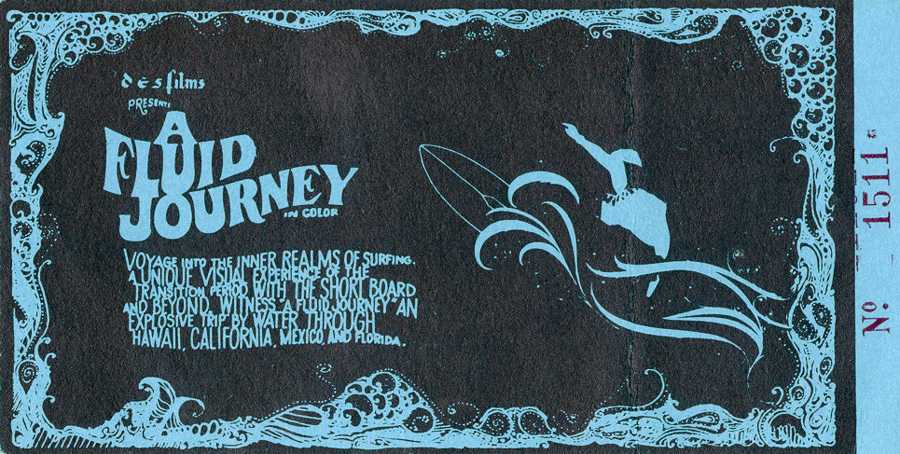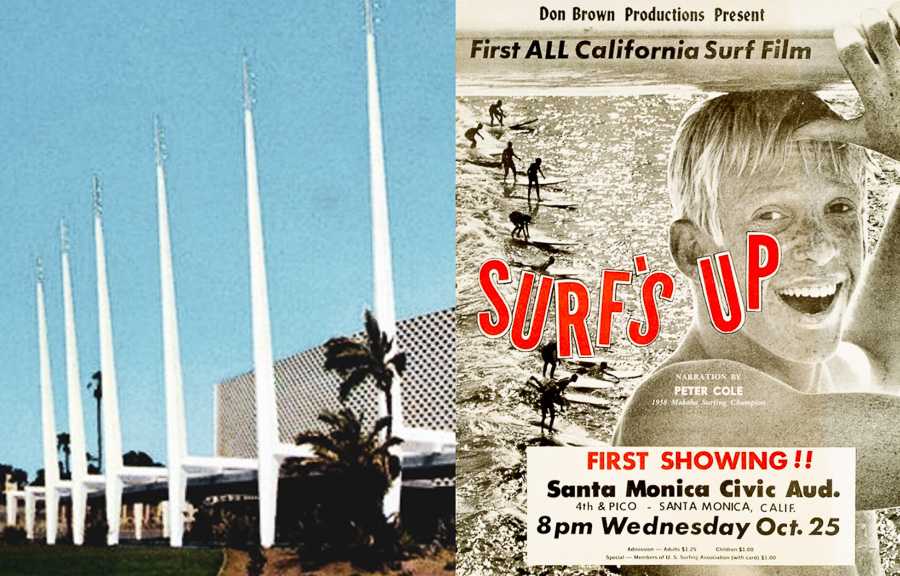SUNDAY JOINT, 5-25-2025: THE X FACTOR

Hey All,
Beach culture connoisseur Murray Walding of Noosa reached out after last week's shock-doc Sunday Joint to remind me that former Aussie "It" girl and recent Joint headliner Tanya Binning had a cameo in Mondo Cane, the mother of all mondos, as a young teen lifesaver—very young, just 15—giving a mouth-to-mouth resuscitation demo to an "unconscious" man laying on the beach. (Click here, scroll to 42:00). Walding also said the late '60s mondo movies brought to mind his all-time favorite surf flick, the kaleidoscopically unhinged A Fluid Journey, from 1969, and to give you an idea of just how anything-goes Journey was, here's a bit from the Sydney Morning Herald review: "Youth is the subject of this dialogue-free montage which depicts surfing, skiing, the pop world, dissent, and war, [all of which are set] to the strains of music by Strauss, Gershwin, and the Beatles. It is difficult, because of the nature of the film, to know what credit is due to whom, but one can safely single out Peter Clifton."



Clifton told a reporter that Fluid Journey "Moves from the beginning of creation to today and on to tomorrow"—thinking big, in other words, and credit to Clifton, a few years later he would direct Led Zeppelin's concert-fantasy doc-hybrid The Song Remains the Same, described years later in a retrospective review, fairly I think, as being "not jaw-droppingly awful on the level of, say, Xanadu." (Clifton's 1966 feature-length debut, The Summer Search, is less high-flown. From the handbill: "SUN - SURF - SAND - SOME SEX - SKATEBOARDING.")
Back to Murray Walding:
Fluid Journey was a kind of ‘video hits’ of leading musical artists of the time, spliced with surfing and smothered in psychedelic solarization and special effects. Most of the wave-riding action is discarded footage from other filmmakers, like Paul Witzig. The music clips are bootlegged. It is the psychedelic effects which make the film although they can at times make you feel queasy. Interesting backstory to the production, with lots of dodgy behind-the-scenes business dealings. I've attached the Fluid Journey poster, which itself is a bootleg.
"Bootleg" doesn't really go far enough in describing the Journey poster, it is point-blank image theft—which I'm more or less okay with when it comes to boutique surf media, and let's be honest, EOS is not wholly unfamiliar with the odd bootlegged photo or clip. But Clifton ripping off the infamous Blind Faith self-titled LP cover is so far removed from surfing and waves and the beach that I Can't Find My Way Home.

Sadly, there does not seem to be a full copy of Fluid Journey out there, public or private—although I hope I'm wrong about that. If it ever comes my way I will honor the spirit of Peter Clifton and bootleg the living bejesus out of it.
Since we're already over here in the slightly reprobative DIY eat-sleep-hustle-repeat aisle of surf media, let's talk briefly about the fact that two first-gen American surf filmmakers—two that I know of, anyway—pivoted from beach to bedroom, cameras rolling. Dale Davis' entry into softcore porn seems to have taken place in the 1990s, and I'm guessing came as a surprise to nobody, the man was all-in on the Hollywood experience. I didn't dive too deep here, research-wise, but credit Davis as the first and possibly only filmmaker to go online selling surf videos side by side with what he euphemistically called "bikini videos." That's Dale himself, below, as seen on his 1998 website homepage, shooting Pipeline for his wonderful 1967 film Golden Breed.

Bob Vosse is the other filmmaker, and even you surf culture silverbacks will likely not recall the name—but you've for sure seen his surf movie posters, both are classic, and more on on that shortly. I'm still running and gunning here, so take all of this with a grain of salt. But my impression is that where Dale Davis was a surfer at heart who took a turn to porn after playing the rest of his cards, Vosse was a career pornster who just happened to get started in surf. Not just surf movies, either, but surf trade shows, and a short-lived surf magazine.
What sticks in my mind most about Vosse is that he did all his X-rated work under his given name, but used "Don Brown" for his surfing ventures—I was halfway to a jape about surf being less reputable than porn in the early '60s, but that's not true. We drank on the beach, cursed in public, cut school, went in for some lightweight vandalism. But we weren't perverts or deviants (to borrow period-correct lingo), like the smut-peddlers.
So who knows why Bob Vosse did his surf business entrepreneuring as "Don Brown," which is not just soft and forgettable, but easily confused with Bruce Brown and Bud Browne? Unless maybe that was the point.

Anyway, Brown made just two surf movies: Surf's Up in 1961 (billed as the "FIRST ALL-CALIFORNIA SURF FILM), and 1963's Have Board, Will Travel. Neither one, as far as I know, ever made it to VHS or DVD or the streaming channels. They just vanished—although again, I hope I'm wrong. The only way to judge Brown as a filmmaker (in this genre, anyway) is by the movie handbills, both of which are cheerful and fun and emphatically G-rated.
IMDb tells me that Vosse's adult-film career began with 1969's amazingly-titled The Satin Mushroom and ended some 120 films later, not long after 1994's Psychoanal Therapy, and included a 1987 AVN nomination for his camera work on Blonde Heat (the Case of the Maltese Dildo). Vosse died in Memphis in 1999 at age 72, and I'll try to connect the bottom half of today's Joint to the top half by pointing you to Vosse's AVN obituary, in which Jim Malibu, Vosse's right-hand man, says his boss filmed Endless Summer and the famous long-peeling opening wave in Hawaii Five-0. Both claims are fabulously untrue—bootlegged, you might say—and if Peter Clifford knew you could go this big, he'd have said it was him onstage playing guitar in The Song Remains the Same.
I closed last week's Joint by pointing out that surfing used to be young and alternative enough to be in mondo films. We're in the same ballpark this week—surfing was XXX before we went XXL.
Thanks for reading and see you next week!
Matt

[Photo grid, clockwise from top left: Robert Plant and Jimmy Page in The Song Remains the Same; Johnny Fain in Dale Davis' The Golden Breed; Peter Clifton, left, and Paul Witzig, center, in 1963; Times Square in the 1970s; Olivia Newton-John in Xanadu; shot from Hawaii Five-0 opening credits. Frame grab from Peter Clifton's 1969 movie Popcorn. Portrait of Clifton in the mid '70s. Ticket stub from Fluid Journey. Homepage from Dale Davis' website in 1998. Handbill and BW promo photo for Have Board, Will Travel. Santa Monica Civic and handbill for Surf's Up.]